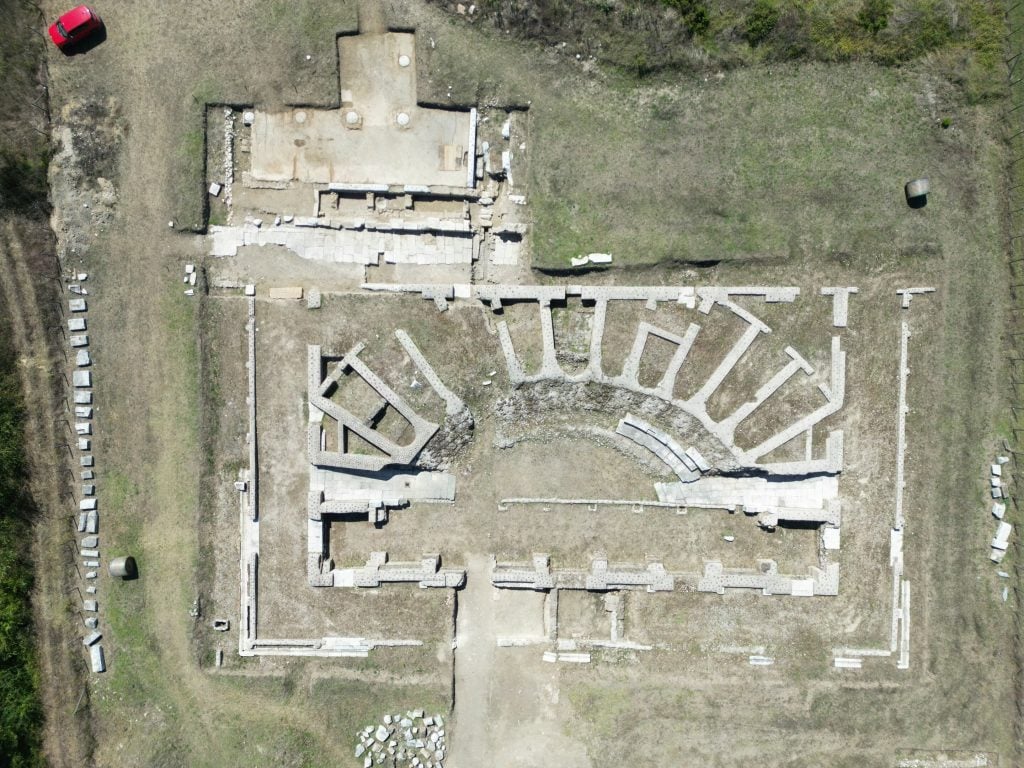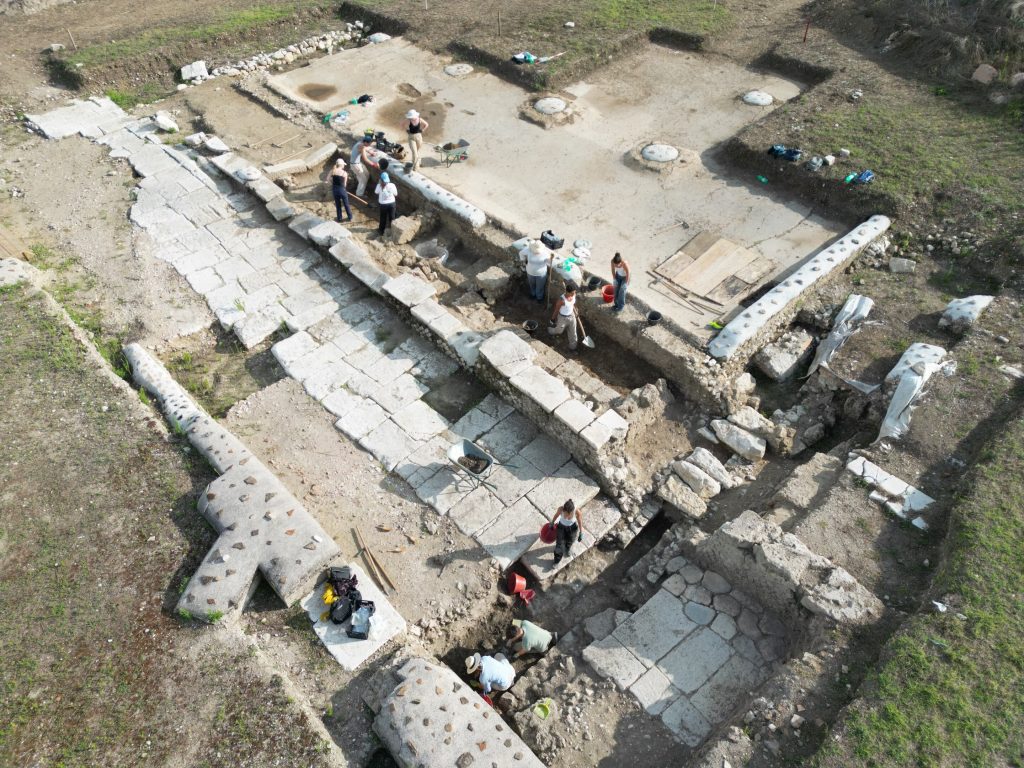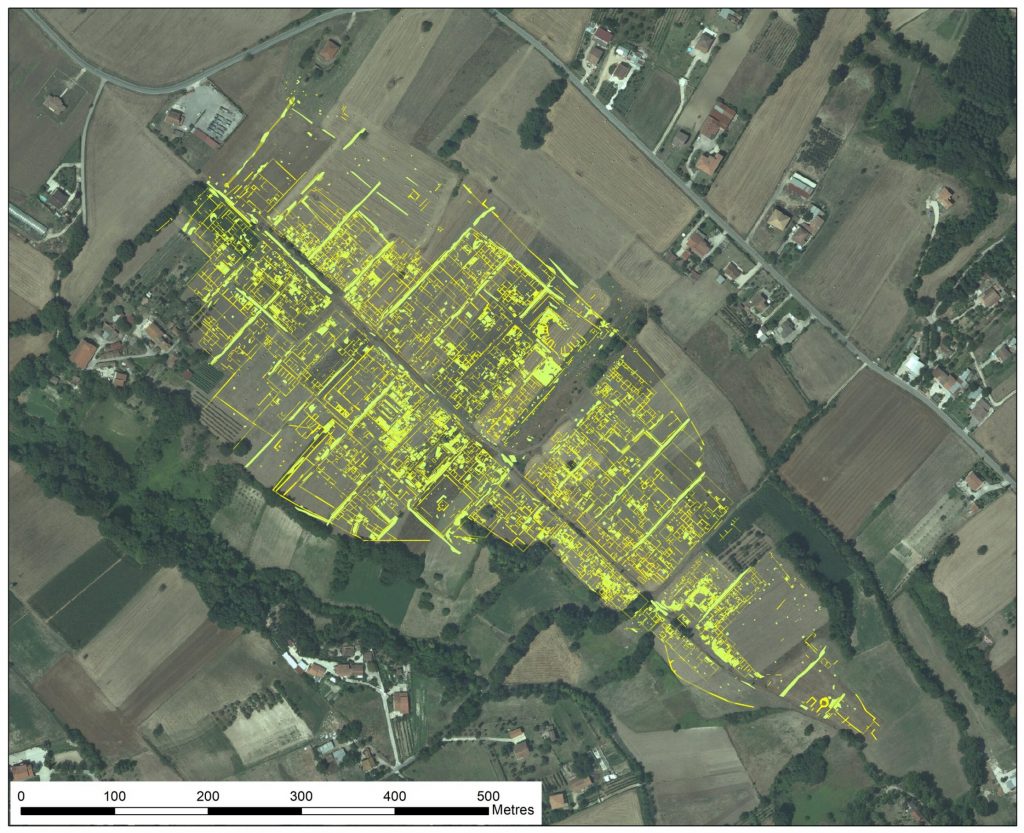Archaeology & History
This Roman Colony Was Long Thought to Be a Backwater Town. New Findings Are Changing That
A 13-year excavation at Interamna Lirenas has turned up evidence of a thriving trade hub.

A 13-year excavation at Interamna Lirenas has turned up evidence of a thriving trade hub.

Artnet News

Though the colony of Interamna Lirenas in central Italy once served as a key Roman bulwark, its fortunes, according to contemporaneous accounts, declined in the years following the Second Punic War (218–201 B.C.E.). For long, it was deemed an obscure, backwater town that didn’t even import its own pottery—but recent excavations are dramatically recasting that history.
A new study published by a University of Cambridge team in Roman Urbanism in Italy details findings and analysis from a 13-year dig at the site in the Italian province of Frosinone. Excavations have turned up remains of structures and markets, while a geophysical survey has offered a detailed view of the town’s remarkable urban development.

Drone view of the excavation of the two footpaths lining the street separating the basilica (top) from the theater (bottom) at Interamna Lirenas. Photo: Alessandro Launaro.
They’re stunning finds for a site once deemed “unpromising,” said Alessandro Launaro, the study’s author and the Interamna Lirenas Project lead. “There was nothing on the surface, no visible evidence of buildings, just bits of broken pottery,” he said in a statement. “But what we discovered wasn’t a backwater—far from it. We found a thriving town adapting to every challenge thrown at it for 900 years.”
Interamna Lirenas was established in 312 B.C.E. as a military base, as recorded by historian Livy. It faced onslaughts from the Samnites in 294 B.C.E. and then the armies of Hannibal during the Second Punic War. In 46 B.C.E., the town also earned the patronage of Julius Caesar, who likely recognized its strategic role when he was trying to consolidate power during the civil wars.

Gorgon antefix (ca. 3rd to 2nd century B.C.E) found in a dump of material within the theater following its abandonment. The antefix probably belonged to an earlier nearby building. Photo: Alessandro Launaro.
Earlier studies had placed Interamna Lirenas’s peak around the late 2nd to early 1st centuries B.C.E., before it shrunk from 74 to 25 acres in the 1st century C.E. However, Launaro’s team studied the thousands of commonware (as opposed to imported) pottery found at the town, discovering that it would have housed around 2,000 people at its height toward the later part of 3rd century C.E.—some 300 years later than previously assumed.
At the northwestern side of the site, the team also uncovered the remains of a theater large enough to accommodate 1,500 people. The structure featured a rare roof and diverse marbles, as well as inscriptions of patrons who likely funded its construction. In one, a double seat was dedicated to M. Sentius Crispinus at some point between the 3rd and 4th centuries C.E.

Interpretation of geophysical survey results showing underground traces of Interamna Lirenas in the context of the wider landscape today. Photo: Alessandro Launaro.
A further survey located the remnants of a warehouse, a temple, three bath complexes, 19 courtyard buildings, and hundreds of houses. The team believe that this infrastructure was intended to serve a thriving trade hub—further suggested by surviving lists with reference to the town’s two markets—between the 1st century B.C.E. and 4th century C.E.
No evidence was found to indicate if or how Interamna Lirenas was destroyed. Rather, Launaro suggested that its residents had simply deserted the town ahead of the Lombard invasion in 6th century C.E.
“We’re not saying that this town was special—it’s far more exciting than that,” Launaro added of the colony’s newly discovered history. “We think many other average Roman towns in Italy were just as resilient. It’s just that archaeologists have only recently begun to apply the right techniques and approaches to see this.”
More Trending Stories:
Art Dealers Christina and Emmanuel Di Donna on Their Special Holiday Rituals
Stefanie Heinze Paints Richly Ambiguous Worlds. Collectors Are Obsessed
Inspector Schachter Uncovers Allegations Regarding the Latest Art World Scandal—And It’s a Doozy
Archaeologists Call Foul on the Purported Discovery of a 27,000-Year-Old Pyramid
The Sprawling Legal Dispute Between Yves Bouvier and Dmitry Rybolovlev Is Finally Over